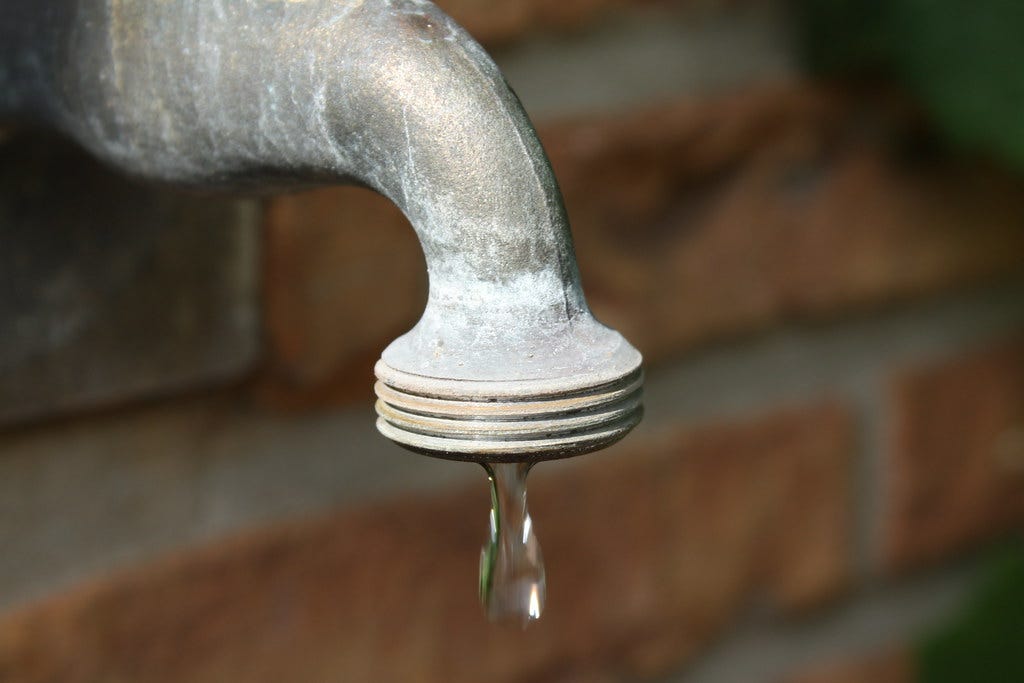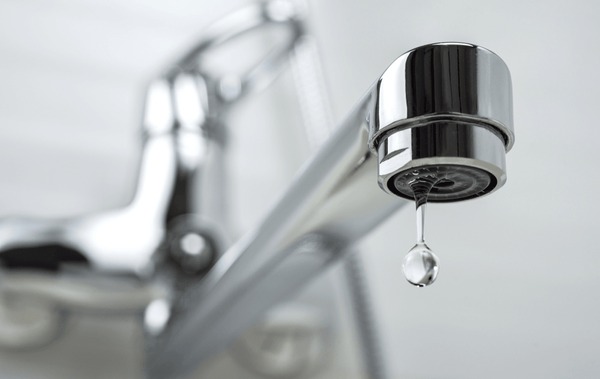An Consequences of Encountering a Damaged Faucet
An Consequences of Encountering a Damaged Faucet
Blog Article
We've noticed the article relating to Causes and Consequences of a Leaky Faucet directly below on the web and reckoned it made perfect sense to write about it with you on my blog.

Introduction
A leaking tap may appear like a small nuisance, yet its effects expand much past the periodic drip. Comprehending the results of a dripping tap is vital for both house owners and the setting. In this write-up, we'll explore the various impacts of this typical household problem and why addressing it quickly is necessary.
Sources Of Leaky Faucets
Dripping taps can arise from a range of aspects, including deterioration, high water pressure, and corrosion. Over time, the constant use taps can result in worn-out seals and gaskets, causing leakages to develop. Additionally, too much water stress can put strain on plumbing components, leading to leaks. Deterioration and corrosion can likewise deteriorate faucet elements, making them vulnerable to leakage.
Water Waste
One of the most considerable consequences of a leaking tap is water wastefulness. Even a tiny drip can add up to gallons of wasted water over time. This not only drives up water bills however also adds to water deficiency and environmental destruction. Addressing dripping faucets promptly is critical for saving this priceless resource and reducing its impact on the planet.
Financial Influence
Along with wasting water, dripping faucets can additionally have a considerable financial influence. Enhanced water costs are a direct effect of water waste, setting you back property owners hundreds of bucks annually. Moreover, the expense of fixing water damage brought on by leaks can be significant, especially if left ignored for an extensive period.
Ecological Impact
The environmental influence of leaky taps prolongs past water wastage. By saving water, homeowners can contribute to more comprehensive efforts to reduce water deficiency and protect natural ecosystems. Sustainable options such as rain harvesting and water-efficient fixtures can even more minimize the ecological footprint of home water usage.
Technological Solutions
Innovations in technology have actually resulted in the advancement of clever faucets and water-saving devices that assist lessen water wastefulness. Smart taps use sensors to find activity and adjust water flow appropriately, decreasing waste without compromising comfort. Water-saving tools such as aerators and low-flow showerheads are additionally effective in conserving water without compromising performance.
Worldwide Point of views
While leaking taps might appear like a local concern, they add to more comprehensive international obstacles such as water deficiency and climate modification. In regions already dealing with water tension, every decrease counts, making leak prevention and repair work vital. By embracing water-saving methods and purchasing sustainable technologies, homeowners can play their part in addressing these pushing international concerns.
Regulative Measures
Government laws play a crucial role in mitigating the impact of dripping taps and promoting water conservation. From building codes that call for water-efficient components to water-saving rewards and refunds, policymakers have a range of devices at their disposal. By carrying out and implementing these policies, governments can guarantee that property owners prioritize water preservation in their every day lives.
Community Impact
Resolving leaking faucets calls for collective efforts at the area level. By raising understanding about the relevance of water preservation and offering sources for leakage discovery and repair work, local authorities can encourage property owners to do something about it. Efforts such as water-saving rebate programs and leakage detection projects can incentivize behavior adjustment and promote liable water usage.
Instance Studies
Real-life instances of the effect of dripping faucets emphasize the relevance of positive upkeep and timely fixings. From water damage to increasing water bills, the effects of disregarding leakages can be severe. By sharing these case studies, home owners can better recognize the significance of attending to leaky faucets immediately.
Educational Campaigns
Educational campaigns play an important role in raising awareness about the impacts of leaky faucets and promoting water preservation techniques. Through workshops, workshops, and on the internet sources, homeowners can learn how to find and repair leaks themselves. By encouraging people with understanding and tools, educational projects can cultivate a culture of accountable water use within communities.
Health Issues
Leaking taps can produce conducive environments for mold and mildew and mildew development, positioning wellness threats to passengers. The visibility of mold can aggravate breathing problems and allergic reactions, especially in prone people. In addition, water damages resulting from leaks can jeopardize the architectural honesty of structures and lead to pricey repair work.
DIY vs. Expert Fixing
When confronted with a leaky faucet, home owners often dispute whether to try fixings themselves or work with a specialist plumber. While do it yourself repairs can save money, they might not constantly resolve the hidden concern successfully. Specialist plumbings have the expertise and equipment to identify and deal with leakages appropriately, making certain long-term options and satisfaction for home owners.
Safety nets
Protecting against dripping faucets requires regular maintenance and proactive steps. Basic tasks such as replacing worn-out washing machines and seals can stop leakages from creating. In addition, updating to premium fixtures and decreasing water pressure can aid extend the lifespan of taps and lessen the danger of leaks.
Conclusion
Finally, the impacts of a leaky faucet expand much beyond the periodic drip. From water waste and increased water costs to health and wellness concerns and ecological effect, the consequences of overlooking leakages can be substantial. By attending to leaking faucets without delay and taking on water-saving methods, homeowners can alleviate these impacts and add to a much more sustainable future.
Why You Shouldn’t Ignore a Leaky Faucet in Your Home
What Causes a Leaky Faucet?
Various factors can cause a leak, from loose and worn-out parts to corrosion. Your faucet has four essential components from which most plumbing issues will stem: the O-ring, the valve seat, the washer and the gasket.
What Is an O-Ring?
The O-ring is a stem screw that fastens parts of the faucet in place, preventing water from leaking out of the spout. Depending on your faucet type, the stem might have multiple O-rings. Water will drip from the faucet’s handles and base if this part breaks or deteriorates.
What Is a Valve Seat?
The valve seat controls the flow and temperature of the water. Found at the base of the handle, it works as a seal for the faucet’s stem. The valve seat ensures the water is allowed to flow or is blocked as the handles dictate. You’ll know it’s malfunctioning when water leaks from your faucet’s sides.
What Is a Gasket?
The gasket is found between the water inlet and the valve stem. It creates a seal between the faucet and the sink, holding its joints by aerators attached to the stem’s head. Water will trickle out from the base if the gasket isn’t working.
What Is a Washer?
The washer secures the handles and prevents leakage, serving a similar purpose to the O-ring. While the O-ring is ordinarily round and made from an elastic material, such as rubber, the washer is square-shaped and composed of brass, copper and other hard metals. If it malfunctions, corrodes or has been improperly installed, water will leak out of the handles, causing that incessant faucet drip.
Why Is a Leaky Faucet Dangerous?
A leaky faucet left alone for too long can have significant consequences.
Pest Infestations
Since bugs and rodents gravitate towards the scent of water, a leaky faucet will draw pests to your sink. Both are looking for leaks accessible through crawl spaces, which a faucet provides. If you leave water dripping for too long, you run the risk of an infestation.
Rust
If one of the faucet parts has started to corrode, the resulting rust can spread to your pipes and valves with startling speed. The rust might even lead to cracks or other impairments, resulting in more severe plumbing issues.
Your sink could also sustain damage from a leaky faucet. The water in your tap possesses sparse elements of calcium and iron that can stain your sink with repeated and prolonged exposure. Once those elements in the water have been open to the air for some time, your sink will start to rust, creating marks that can be difficult to remove.
https://www.tomsmechanical.com/blog/why-you-shouldnt-ignore-a-leaky-faucet-in-your-home

As a passionate reader about Health Risks Posed by Leaking Faucets, I thought sharing that excerpt was necessary. Do you know somebody else who is occupied with the subject? Be sure promote it. Thanks so much for taking the time to read it.
Report this page